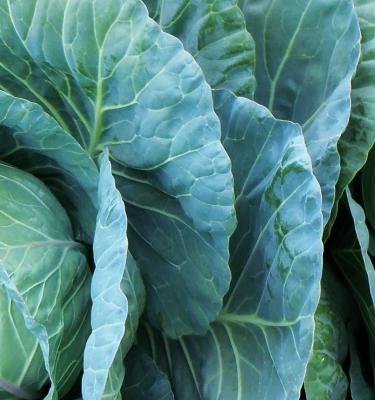

Growing Cabbage
Cabbages are an easy and versatile vegetable for you to grow and enjoy at home!
It can be eaten raw, cooked into dumplings, casseroles, stews and stir-fries, and even pickled or fermented into sauerkraut or kimchi.
Cabbage love growing in cooler conditions, so plant in the cooler months of autumn, winter and spring. Cabbage seedlings can be frost damaged in winter, so if you’re growing in a heavy frost zone - plant cabbages in late summer so they’ve matured enough to be frost tolerant come the height of winter.
If you’re growing cabbage in the tropics and sub-tropic regions of Australia you’ll need to look for more heat-tolerant varieties of cabbage including ‘Sugarloaf’, ‘Red Drumhead’ and Chinese Cabbage.
4 Key Things to Growing Cabbage
- Sow cabbage seeds or cabbage seedlings in early autumn for a winter and spring harvest.
- Choose a full sun spot, with a rich and free draining soil.
- If you live in the tropics or subtropics look for one of the more heat tolerant varieties of cabbage.
- Short on space? Look for miniature varieties of cabbage - they are perfect for pots!
Prepare
Cabbages prefer a full sun spot in a well-drained, organic matter rich soil. Before planting, mix Scotts Performance Naturals Organic Based Soil Improver and Scotts Performance Naturals Tomato, Vegetable & Herb Organic Based Fertiliser through the top 10-20cm of soil.
Growing cabbage from seed
Sow cabbage seeds 10mm deep into punnets filled with Scotts Performance Naturals Premium Potting Mix - plant 6-8 seeds per punnet. Once the seedlings are 10-15cm tall, transplant them into your garden or pot allowing 40-70cm between seedlings depending on the variety.
Growing cabbage from seedlings
Plant cabbage seedlings in a full sun spot, into soil that’s been enriched with Scotts Performance Naturals Organic Based Soil Improver mixed through the top 10-20cm of the soil before planting.
Plant
Growing cabbage in the garden
- Plant cabbage seedlings into prepared soil, on average, allow 40-70cm between seedlings - depending on the variety.
- Protect young seedlings from slugs and snails by sprinkling around Defender Snail & Slug Pellets.
- To protect young seedlings from the caterpillar of the cabbage moth (Plutella xylostella) and small cabbage white butterfly (Pieris rapae) use wildlife safe insect exclusion netting.
- Lightly mulch the soil around plants after planting with an open mulch to retain moisture and suppress weeds.
Growing cabbage in containers
- Cabbages can be grown in pots or planters with good drainage - choose something that is at least 50cm wide and the same deep.
- If you’re limited with space look for some of the more compact growing varieties of cabbages that can be planted closer together.
- Fill your pot or planter with Scotts Performance Naturals Premium Potting Mix ready for planting and add Scotts Performance Naturals Tomato, Vegetable & Herb Organic Based Fertiliser.
- Plant cabbage seedlings directly into these prepared pots, allowing 50-70cm between each seedling.
- Lightly mulch the soil around plants after planting with an open mulch to retain moisture.
Harvest
Cabbages will be ready to harvest 12-20 weeks from planting, depending on the variety. The head should be firm and the leaves tightly held together at harvest time.
Heading cabbages should be removed from the plant whole - use a sharp knife to cut below the head. If you have enough growing season left at this first harvest, secondary smaller heads of cabbage may form on the main plant.

Pests & Diseases
Look out for the following pests and diseases attacking cabbage plants:
- Slugs and Snails - most likely to cause significant damage to young cabbage seedlings. Protect young plants by setting beer traps (saucers filled with beer) amongst seedlings or use Defender Snail & Slug Pellets.
- Caterpillars - the white flying adult cabbage moth (Plutella xylostella) and small cabbage white butterfly (Pieris rapae) they lay their eggs onto cabbages (and other brassica crops) and the small green caterpillars feed on the leaves. To control these pests; remove the caterpillars by hand regularly, use insect exclusion netting over your crops to keep the flying moths/butterflies out or spray infested plants with Defender Pyrethrum Insect Spray.
- Aphids - aphids tend can attack the growing shoots of young cabbage plants. Remove some of the lower leaves to improve light and air circulation around the plants. Spray aphid infestations with Defender Pyrethrum Insect Spray if needed.



